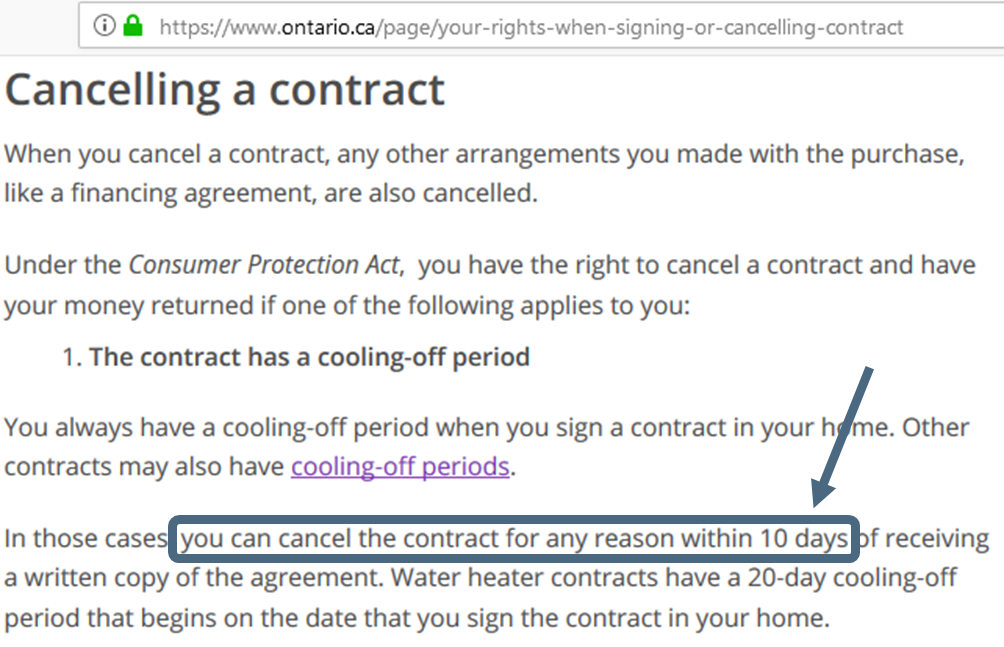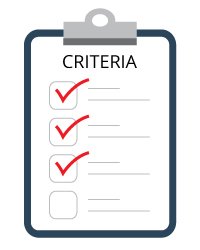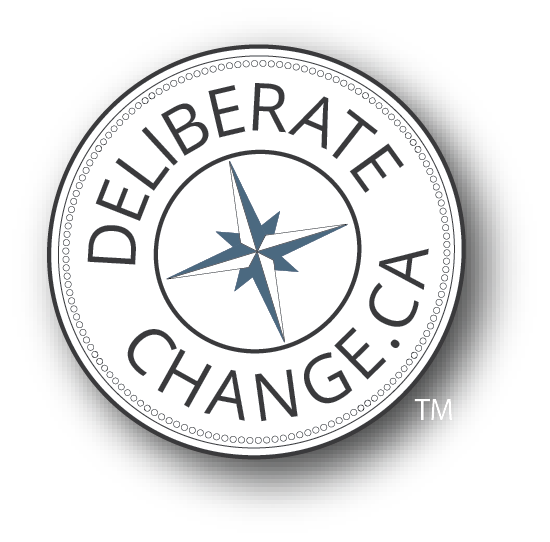
Photo credit: Visual Content Legal Gavel & Open Law Book via photopin (license)
Some people make absolutely terrible decisions.
I’m not talking about 90’s hairdos or spitting into the wind. I’m talking about significant or cumulatively significant decisions that have lasting impacts on your finances, health, relationships, environment, long-term enjoyment of life, and so on.
We’ve all had our share of bad decision-making experiences or habits. Do any of these situations sound familiar?
- You spend $40-50k on credit for a depreciating asset like a new pickup truck or SUV without realizing the true cost in money and your effort to recoup said money.
- You’re prone to analysis/paralysis (otherwise known as going in circles!) and are never completely satisfied that you’re about to make the right decision.
 You don’t even think about this stuff at all, but you seem to wonder a) where all your money went, and b) where all your stuff went that you bought with that money? (Hint: It was probably either junk and is already thrown out or relegated to the storage room; or it’s become mundane and you no longer experience the short-term happiness it initially brought you.)
You don’t even think about this stuff at all, but you seem to wonder a) where all your money went, and b) where all your stuff went that you bought with that money? (Hint: It was probably either junk and is already thrown out or relegated to the storage room; or it’s become mundane and you no longer experience the short-term happiness it initially brought you.)- You’re a businessperson, manager or investor who has to make critical decisions regarding contracts, product development or other big-ticket purchases that will affect your livelihood and those of your employees.
Today’s post goes hand-in-hand with additional free tools and content available for download if you sign up for the mailing list. Drawing from over a decade of engineering experience in both technical and leadership roles, I will walk through a process to logically turn complex decisions into a series of smaller, bite-sized actions that will hopefully guide you down the right path. I’ve personally used this process or variations on it for countless decisions in the workplace and in my home life, from selecting a baby stroller all the way up to helping customers efficiently allocate millions of dollars.

I’ve even seen variations of this process performed as full-up trade studies with massive macro-based Excel equations and charts. I’m not necessarily suggesting that here, although if you’re talking about selecting the characteristics of your next product, or determining whether to enter a new market with your business, then you probably should conduct such an analysis; ultimately, it’s really just a more detailed variation of some of the steps.
This post will be followed up shortly with several real-life personal examples of applying the process to decisions of varying significance, showing how it is both rigid and flexible. Perhaps most surprisingly, this is not entirely about removing emotion. In fact, you don’t necessarily have to eliminate emotion from the decision process, but you DO have to identify and control it.
You don’t necessarily have to eliminate emotion from the decision process, but you DO have to identify and control it.
So without further ado, here’s my 10-step process for making great decisions:
- How Important Is It?
- Wait!
- Is It Even a Decision?
- Engage Your Advisors and Stakeholders
- What Do You Need and Want?
- What Are Your Choices?
- Get the Data
- Crunch the Numbers
- What Does Your Gut Say?
- Make a Call and Do it!
Let’s break these down a bit.

How Important Is It?
You’re not going to want or even need to follow this entire process for every single decision. Analyzing what cereal to have for breakfast this morning is not that important! On the other hand, deciding on a nutritional strategy that fits your budget and health goals could very well be a significant decision.
The bottom line here is that if it’s not that important, and it’s not that important cumulatively, then just do whatever you want within reason. Pick and choose the steps that work for your specific case. For example, you can work steps 5 and 6 casually on the back of an envelope in many cases. Use your judgement.
Be careful, though: I think you’ll find that, if you’re honest with yourself, many decisions that might not seem important at first do in fact become meaningful and significant when you compound them with each other (such as the nutritional example above). It’s also possible, however, that you might actually be more interested in breaking a bad habit* than in making a decision, in which case these steps aren’t really what you need to follow.

Wait!
There’s a reason that the Government of Ontario has mandatory “cooling off” periods for certain types of contracts. This is because they know that we are all susceptible to making very poor decisions when faced with certain sales tactics under certain conditions. Well, oftentimes we psychologically put ourselves into those situations without anybody else even being around! If you can remove yourself from the environment or temptation and cool off for a period of time, you can make a better decision. A great little example of this would be to simply never buy anything above a certain dollar value without first waiting an hour, or a day, or a week.
 But what if it’s urgent or an emergency? I’m not referring to “manufactured urgency” or “manufactured scarcity” where vendors try to convince you to move now lest the product go to someone else. No, I’m referring to the many real decisions that actually need to be made when you might not always have the luxury of time. Using as many of the steps below as possible is a great start, even in an informal way. But another idea is to try and get ahead of the 8-ball.
But what if it’s urgent or an emergency? I’m not referring to “manufactured urgency” or “manufactured scarcity” where vendors try to convince you to move now lest the product go to someone else. No, I’m referring to the many real decisions that actually need to be made when you might not always have the luxury of time. Using as many of the steps below as possible is a great start, even in an informal way. But another idea is to try and get ahead of the 8-ball.
If you are able to predict that at some point in the not-to-distant future, “this” might occur, then you can be at least somewhat prepared. It’s actually a risk-management strategy*. Why not spend a bit of time now and then pre-shopping or keeping up on the market in case you destroy your car, or your computer crashes, or your toddler wrecks your trusty fill-in-the-blank. Just don’t get suckered into actually buying something before you really need to! Fortunately the rest of these steps will help protect you.

Is It Even a Decision?
It’s important and you’ve slept on it. Now ask yourself if you even really need to make a decision at all. (Huh?)
You might realize that no, you don’t actually need a new widget because your old one is actually still fine, or at least good enough for now. Or no, you don’t need to change jobs because the real problem was your attitude and not the work or the people around you. Or you realize it’s actually a habit that you already know you just need to break*, and there’s no point in going through the steps to show you what you already know. Or…
Sometimes this step actually becomes a decision itself, which would drive us into some kind of nerdy sci-fi iterative, recursive loop. But just roll with it and carry on!

Engage Your Advisors and Stakeholders
Before we move into the meat of the process, we need to start talking with people we trust (our advisors) and with people who will be impacted by the decision (our stakeholders). Note the differing roles of advisors and stakeholders. The former is anybody you trust that you can discuss with, who can hold you accountable, and who is a great sounding board. The latter represents anybody who has an interest in the outcome of the decision, such as the money manager, your boss or spouse (funny how those two seem to sound nice together sometimes!), your teammate, your customer, the final end-user, etc.
 When selecting advisors, be sure that they are able to quantify their biases (we all have biases). Be choosy on their area of expertise. Just because someone is a good trusted friend does not necessarily mean that he or she has any experience with the subject of your decision. Would you ask an accountant for recommendations on what medication to use? Or would you ask a doctor to recommend appropriate taxation strategies for your real estate business? (Well, maybe if the accountant has or had the same medical issue as you, or if the doctor is also killing it in real estate, but you get the point.)
When selecting advisors, be sure that they are able to quantify their biases (we all have biases). Be choosy on their area of expertise. Just because someone is a good trusted friend does not necessarily mean that he or she has any experience with the subject of your decision. Would you ask an accountant for recommendations on what medication to use? Or would you ask a doctor to recommend appropriate taxation strategies for your real estate business? (Well, maybe if the accountant has or had the same medical issue as you, or if the doctor is also killing it in real estate, but you get the point.)
Poll your advisors but don’t rely solely on them. If they are good, they will point out the positive and negative aspects of your options; they will step outside what they want and look from your perspective; they will not simply “follow the herd”. Watch out for groupthink or “yes men”, whether that’s your advisor or you. Do not simply pick a direction that will make them happy (this is perhaps most dangerous when your advisors are also your parents or other close family members).
When holding discussions with stakeholders, ask your questions in a variety of ways. You need to generate healthy discussion around their true needs vs. their own perceived needs. This is the difference between meeting their requirements and meeting their expectations.
You need to generate healthy discussion around their true needs vs. their own perceived needs. This is the difference between meeting their requirements and meeting their expectations.
Continue to dialogue with your advisors and stakeholders throughout the process. Their experience can be valuable to ensure that you don’t miss any inputs to the remaining steps.

What Do You Need and Want?
You’ve no doubt heard of the difference between wants and needs. This is the fundamental principle behind this step. Start by writing a list of the things that are important to you (and your stakeholders!) and then sort them according to importance. Don’t forget things you want to be minimized, such as costs, waste, etc.
The criteria list…
Keep the items mutually exclusive or independent. You don’t want to double-count anything. For example, lots of trunk space, a wide trunk opening, and the ability to stuff a 48″ TV into the trunk are not entirely independent wants when you’re car shopping. You would be better off keeping only the first two or only the last one.
This is also where we can legitimately allow emotion to come into play, within reason. If the “coolness factor” or your ego is important, call a spade a spade and include it! Don’t pretend it’s not there when we all know it is. By being open and honest with yourself, you can start to put healthy boundaries around how much your emotion will impact your decision.
 Some high-level examples of needs and wants would be cost, time, physical effort, longevity, ego boost, brand consistency, personal enjoyment, environmental impact, functionality, alignment with your values, etc. Specifics will of course vary for every situation, but can easily be grouped into categories if it makes it easier to think through. For example, when house shopping, you might group your list into specifics such as cosmetic updates (kitchen, bathrooms, flooring), structural updates (furnace, electrical, plumbing), neighbourhood (streetscape, parks, shopping), etc.
Some high-level examples of needs and wants would be cost, time, physical effort, longevity, ego boost, brand consistency, personal enjoyment, environmental impact, functionality, alignment with your values, etc. Specifics will of course vary for every situation, but can easily be grouped into categories if it makes it easier to think through. For example, when house shopping, you might group your list into specifics such as cosmetic updates (kitchen, bathrooms, flooring), structural updates (furnace, electrical, plumbing), neighbourhood (streetscape, parks, shopping), etc.
Sorting it all out…
How you decide to rank or sort your list is now where the magic starts to come in. This can range from sorting the items into simple pros & cons columns for each option (combined with step 6), all the way up to complex weighted averages. There are many, many different ways to approach this. Here are some common ones:
- Pros & Cons: Just put all items into a “good” and “bad” category associated with each option you figure out in the next step.
- Needs vs. Wants: Split your list into only these two categories. Your needs are the must-haves that you absolutely cannot do without. The wants are things that you are willing to trade off to get your needs. Don’t confuse what you think is a need with what is actually a want. Let’s call these the imaginary needs. Typically I’ve found that there is more of a gradient than just two black and white categories, so this option doesn’t really work as well in practice as it at first appears.
Don’t confuse what you think is a need with what is actually a want. Let’s call these the ‘imaginary needs’.
- “Pugh” analysis: You don’t need to rank your list right now because this will come up separately in step 7 (Pugh is special that way…)
- Ranked or Weighted List: Assign a value of importance to each item. Either 1 to whatever, or allow ties, or relative importance. Be sure to indicate must-haves or deal-breakers.
Above all, watch out for bias. It can lead you astray by resulting in too many list items of a particular category, or by overweighting things you’re too emotionally attached to. Remember, identify and track the emotional items explicitly.
Ok, that was a lot to cover in this step! If there is enough interest in diving deeper into any of these specific techniques, let me know in the comments and I can prepare a separate dedicated post.

What Are Your Choices?
What choices do you have? List them out! Simple. Done.
Well maybe not so fast. As with step 5, watch for bias. Get creative. Brainstorm and come up with new alternatives. Consider combining options into new options with hopefully the best of both worlds.

Photo credit: anka.albrecht Smarties /
Schokolinsen via photopin (license)
Perhaps the point that needs the most discussion here is how to deal with the dreaded Opportunity Cost, which I will abbreviate as OC for now. What is OC? It is a way of comparing your present option(s) to a potential opportunity that you forgo in order to do the present option. Buying Car A comes with the opportunity cost of not buying Car B (because you’re not buying two cars). But it also comes with the opportunity cost of not taking your family on a round-the-world trip (if that matters to you). If the car costs $30k, then any other thing you could do with that $30k is an opportunity cost.
But here’s the rub, and where many people fail to grasp how to handle it properly: It is easy to miss or double-count opportunity cost; don’t do it!
It is easy to miss or double-count opportunity cost; don’t do it!
The easiest way to avoid double-counting or missing OC’s is to simply include them only as explicit options in your list and compare them directly against each other and all of your other options. Let’s go back to that $30k car example. You now have three options: Car A, Car B, World Trip. You’ve turned the trip from a hidden OC into an explicit option. And now you can see that, well, I really don’t need either car as long as I can get to work, but I want the trip, so what about creating a 4th blended option? You can now explicitly consider Cheaper Car C + Shorter Trip Overseas. And that is how you unhide Opportunity Cost.
Obviously, you could take this to the extreme and come up with a gazillion options. Be realistic here and use your judgement to compare only viable options that you would conceivably follow through with.

Get the Data
Create a simple grid (we Engineers like to use the term “matrix”) with the options along the top and your criteria down the left hand side. Now it’s time to fill in all of the empty boxes in the matrix with data that will allow you to determine which options meet or fail to meet the specific criteria you’ve laid out. Don’t cheat! There are plenty of ways to subconsciously or inadvertently bias the results, but there’s an easy way to avoid it:
- If you are ranking or weighting your criteria, be sure to do that before you fill in the data
- Don’t look at the results as you fill in the data; wait until it’s done
- Don’t go back and change the ranks and weights to get the outcome you want!
As you compile your data, know your source; the more reputable, the better. Also, the most varied sources, the better. For example, if you are attempting to calculate the total cost of a car and you’re including an estimate of what its resale value will be 4 years from now, don’t just go off what other people say and think.
Go and read the real data for how much 4 year old versions of your potentially new car are selling for right now! Canadian Black Book and VMR Canada are the two main resources I use. Remember to look at wholesale and resale, and be honest about what you would actually get (you’re probably not a retailer!). Don’t even fully trust Kijiji, Craiglist or the car dealers’ sites because these are just asking prices, not selling prices. Remember the old adage: garbage in, garbage out.
Remember the old adage: garbage in, garbage out
Back up in step 5 I hinted about Pugh. Pugh (I pronounce it “p-you”) is a special case that allows you to not necessarily require any specific data. It is a comparative or relative approach only. Instead of filling in the grid with real data, you identify one concept as your “baseline” or first concept. Then rank all others as better or worse than your baseline. Fill up your grid with those 0’s, +1’s, and -1’s. (I’ve even seen extensive Pugh’s use a scale of -3 to +3.) Then just add everything up and see what comes out on top.
As I mentioned above, let me know in the comments if you’d like me to go into further specific examples of how to do this.

Crunch the Numbers
At this point you should have a spreadsheet full of numbers just waiting to be crunched! (Unless you took the Pugh approach, in which case you’ve already just crunched the numbers.) I will put a spreadsheet template on the Downloads page soon, if you’d like to use it.
Depending on how you set up your lists and rankings, you might just have to add up the numbers and see who wins. Or you might have to count how many pros & cons are associated with each option. Or you might get fancy with Excel’s “sumproduct()” function. Or you might just circle or colour the things that stand out.

Photo credit: wuestenigel Calculator,
close up via photopin (license)
Regardless of the approach you take, you will now be staring at a matrix or list of options with all of your data staring right back at you.
You can run some additional analyses if you like to determine how sensitive or “out of the park homerun” your decisions are. You can sort the results from winner to loser to create a “Pareto” chart showing you which option(s) are closely ranked and allowing you to visualize the “80/20 principle”. You can also deliberately change some of your input parameters to see how the outcome changes. If the outcome doesn’t change too much even if you change your inputs, then it should be pretty clear-cut. If your outputs dance all over the place, then there’s no clear winner and you need to go back to earlier steps and make sure you didn’t miss anything.

What Does Your Gut Say?
All this number crunching and list-generating and brainstorming is cool (well, maybe not cool, but certainly useful when applied appropriately), but it is still just basically a fancy calculator. Before you make your final decision, you need to check in with your gut. Does the output seem reasonable? Does the sensitivity study match your expectations or are you surprised? Why or why not?
Back in competitive high school sports, my dad taught me to think about “Consequence of Error” when calling plays. This is another risk management technique*, but basically boils down to “If I make the wrong decision, how could this go wrong?” Sometimes it’s better to call the second-best choice if it’s much safer. But then again, perhaps you should have included “low risk” as one of your criteria… 🙂

Make a Call and Do it!
You’ve consulted advisors and stakeholders. You’ve listed all of the things that are important and all of the realistic choices you have. You’ve crunched the data and checked in with your gut. What are you waiting for? Pull the trigger and move out on the decision. Be confident that you’ve done a good job, and don’t second-guess yourself. If it turns out to be the wrong decision, learn, adapt, and apply the lessons next time. That’s what life is all about!
Stay tuned for Decision-Making Part Two for several real-life personal examples… In the meantime, a free PDF of this full post and a corresponding wallet card are available on the Downloads page, soon to be joined by a spreadsheet tool that will actually do the math for you.
 Your Turn Now!
Your Turn Now!
How do you make decisions, big or small? Have you ever followed a process like the one I’ve outline above? Are there any steps, processes or elements you would like me to elaborate on in a new post? Plus, if you’d like some help with your decision-making, email me or leave a comment!
– –
* Expect these to be a future blog posts someday…

 You don’t even think about this stuff at all, but you seem to wonder a) where all your money went, and b) where all your stuff went that you bought with that money? (Hint: It was probably either junk and is already thrown out or relegated to the storage room; or it’s become mundane and you no longer experience the short-term happiness it initially brought you.)
You don’t even think about this stuff at all, but you seem to wonder a) where all your money went, and b) where all your stuff went that you bought with that money? (Hint: It was probably either junk and is already thrown out or relegated to the storage room; or it’s become mundane and you no longer experience the short-term happiness it initially brought you.)
 Your Turn Now!
Your Turn Now!







Great post! Very thorough. I think many people could do well by using this process as a control measure personally and professionally to take that critical step back (myself included!).
Thanks Brent! I agree – Hopefully we can encourage more people to take that step back and look at their question a little more methodically.